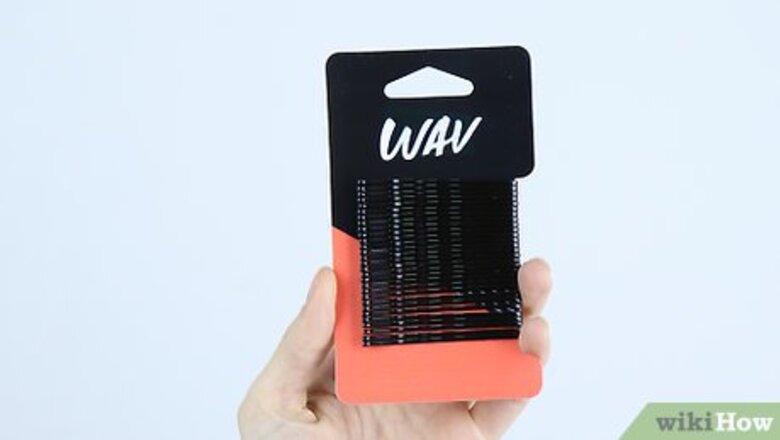
views
How to Put a Bobby Pin in Your Hair
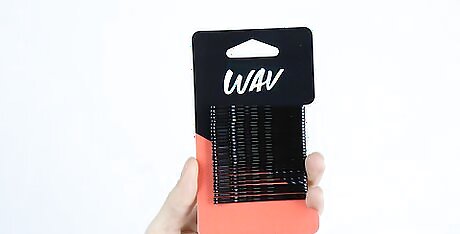
Buy a pack of bobby pins from a store. Bobby pins are located in the aisle dedicated to hair accessories, and they are inexpensive. You can buy higher quality bobby pins, if you choose. Salon professionals advise that they do a better job of holding your hair in place. Try spraying your cheaper bobby pins with hairspray or texturizing your hair before using them. Then, the bobby pins have more ability to grip your hair.
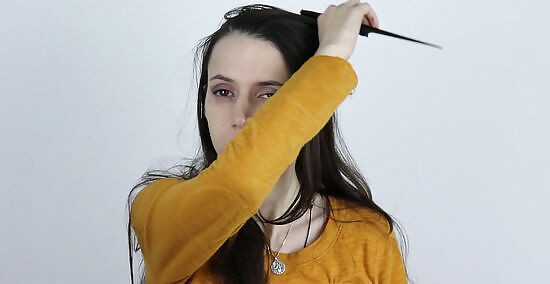
Part a section of your hair using a comb. Start at your temple, or wherever along your hairline you would like, and slide the comb straight back along your scalp, toward the crown of your head. A rattail comb works well for this because of its pointed tip. If you do not have a comb, you can use your index finger; however, the part will likely not be straight.
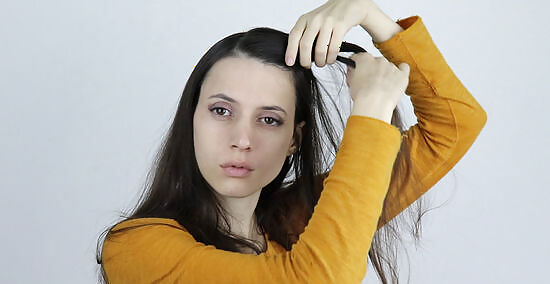
Separate the parted section of hair by lifting it with your fingers. This pulls that chunk of hair away from any straggling hairs from the lower area of your hair.
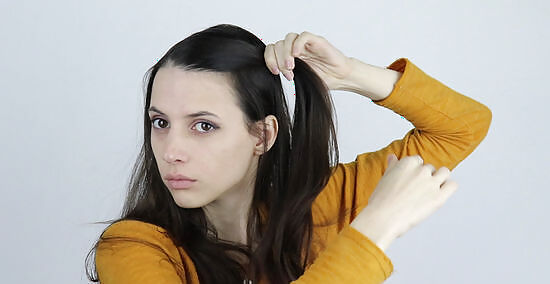
Pinch the parted section of hair where you want to slide the bobby pin. Here are a couple of tips for doing this: If you parted the section of hair on the left side of your head, pinch the hair with your left hand. This frees up your right hand to reach across to slide in the bobby pin. Likewise, if you parted the section of hair on the right side of your head, pinch the hair with your right hand. This way, your arms are not getting crossed and tangled in front of your head.
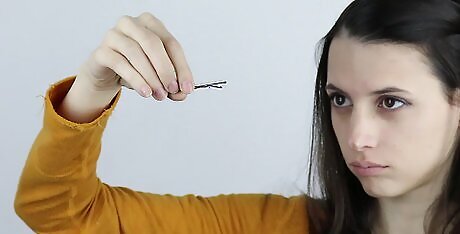
Flip the bobby pin over so that the wavy side faces down. Upon inserting the bobby pin into your hair, the wavy side should be against your scalp. This method provides a better grip on your hair so that the bobby pin stays in place.
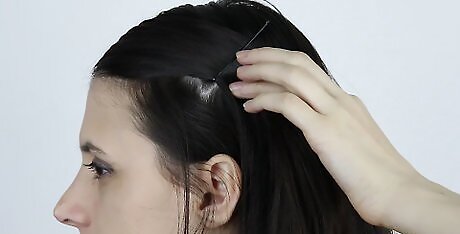
Slide the bobby into your hair so that the flat arm covers the hair. Insert it at such an angle that the hair will be held in place: Slide the bobby pin straight up, toward the top of your head, or at a slight angle toward the back of your head. Do not insert it completely horizontal or downward, because your hair will fall out of the pin. This is a quick and simple method for pinning back your hair. However, it is likely that it will not hold for a long period of time, and you will probably have to reinsert it. You may need to use multiple bobby pins to keep your hair secure for an extended period of time.
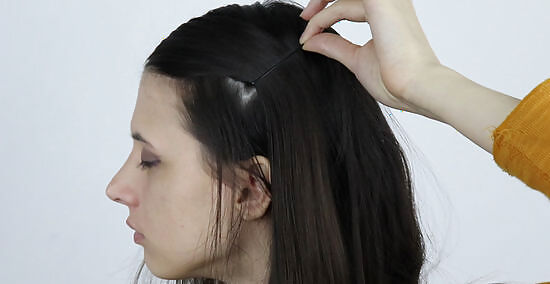
Clear away any loose strands of hair that got snagged in the bobby pin. If these strands should not be secured within the bobby pin, then gently pull them down to clean up the appearance.
How to Secure a Hair Twist With a Bobby Pin
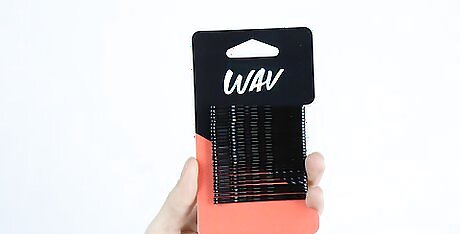
Make sure that you have bobby pins. If you do not have any, you can go to any store that carries hair accessories to buy a pack. You can also buy premium bobby pins, which are touted to hold hair better than cheap bobby pins from a drugstore, for example.
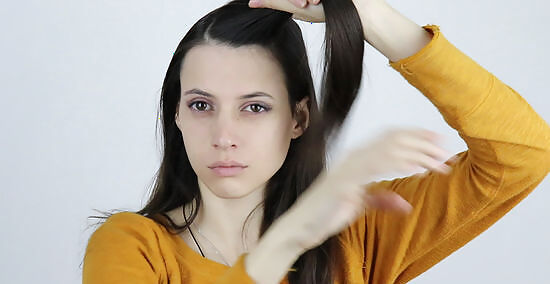
Separate a segment of hair near your face, along your hairline. Use your fingers or a comb to help you part and lift the segment of hair so that it separates from the rest of your hair. Gently push away any loose strands of hair that should not be included in the part. Pulling back hair from along the side of your face will help keep it out of your face and keep flyaway hairs from sticking out.
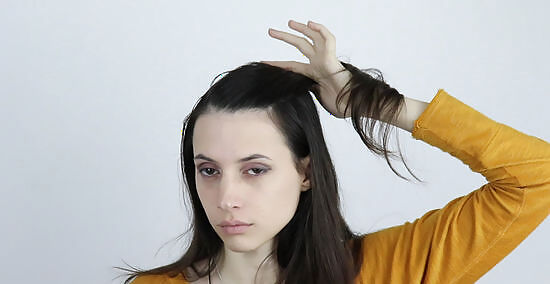
Pull the parted section of hair back toward the crown of your head. Make the parted section perpendicular to your hair that is falling naturally downward. Keep the hair smooth, and if any bumps arise as you gently pull it back, smooth them out without dropping any segments of hair. Smooth out bumps using your fingers or your comb. Do this carefully to avoid picking up any stray hairs that should not be included in the part.
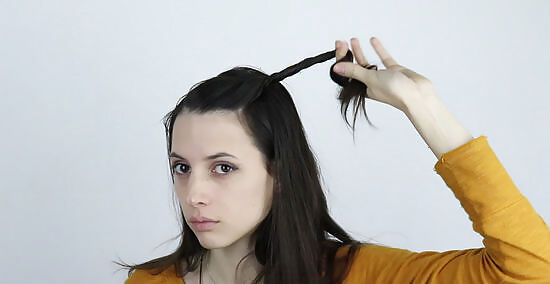
Use your index finger to twist the parted segment of hair a few times. You can make the twist tight or loose; it is up to you based on how you want the twist to look. You will need to twist the part at least five times to get a tight twist, but you will only need to twist it a couple of times to get a looser twist.
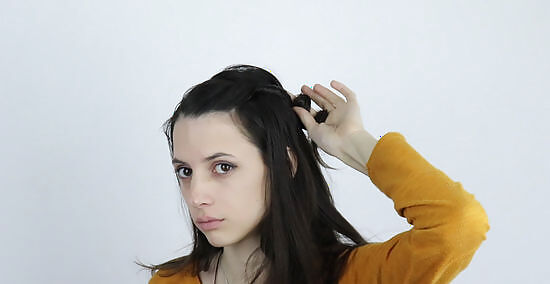
Lay the twist against the side of your head. Gently place it at the height where you want it to sit, making sure again to avoid any bumps. It is best to lay the twist at such an angle (or height) so that the hair that stems from your hairline doesn't bump, or pouf, up when you lay it. If this happens, you will want to gently slide the twist down until the hair lays flat. Hold the twist in place with the hand that is on the same side of your body as the twist. If your twist is on the left side of your head, then hold the twist in place with your left hand. Likewise, if the twist is on the right side of your head, then hold the twist in place with your right hand.
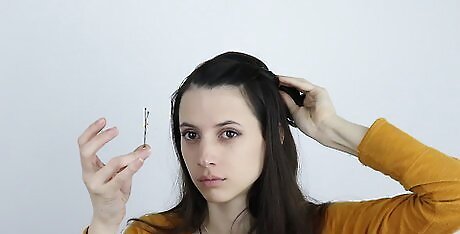
Grab a bobby pin and reach around behind your head. Using the hand that is free, reach around behind your head to prepare to slide the bobby pin in place to hold the twist. Aim the bobby pin so that the open side points toward your face. Make sure that the ridged arm of the bobby pin lays against your scalp.
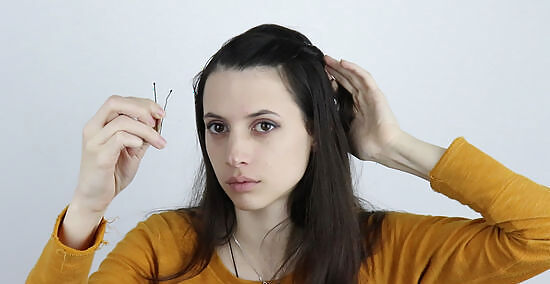
Open your bobby pin and place it where you want your twist to stop. Slide the bobby pin underneath the twist to hide more of the bobby pin but still keep the twist held in place.
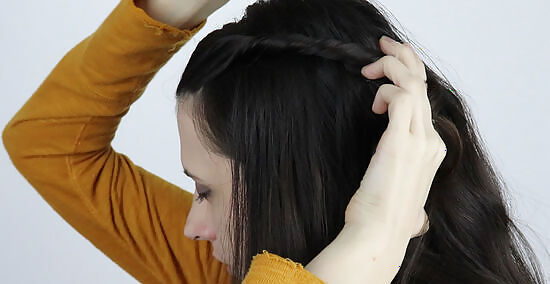
Slide the bobby pin underneath the twist so that it is hidden by the hair. Again, make sure that the ridged side of the bobby pin lays against your scalp. When you are done inserting the bobby pin, most of it should be hidden by the twist. Use bobby pins similar to the color of your hair to hide them better.
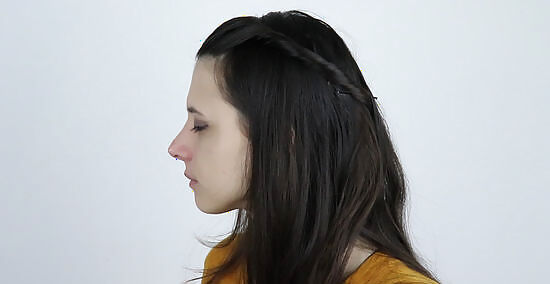
Clean up any stray hairs. Gently pat them down with your hand and/or pull them out of the bobby pin, if they got caught in it.
How to Heighten a Ponytail With Bobby Pins
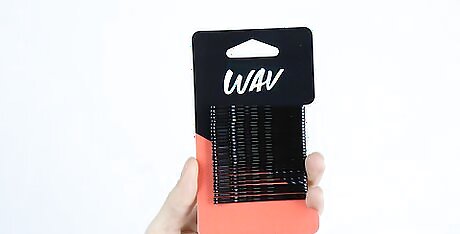
Gather 1-2 bobby pins. If you do not have any bobby pins, you can buy a pack in any drugstore; look for them in the hair accessories aisle. However, salon professionals recommend premium bobby pins, which are more expensive but hold hair more securely.
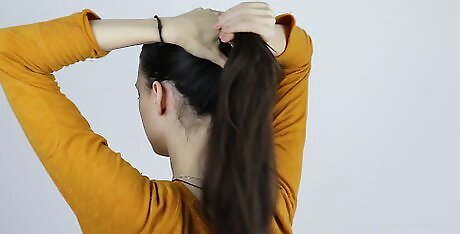
Pull your hair back into a ponytail. You can put the ponytail at any height; this is based on your preference and the length of your hair. Use a comb or brush to help smooth your hair as you pull it back into the ponytail.
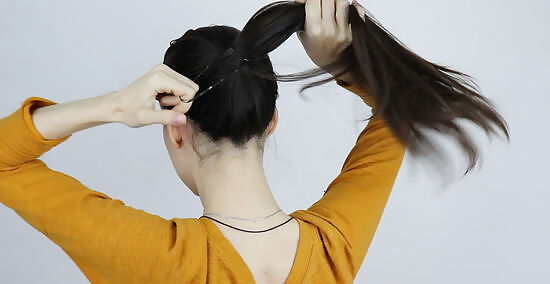
Secure the ponytail with an elastic hair tie. Avoid using hair ties with metal fasteners, as those will get caught in your hair and damage it. Wrap the hair tie enough times to hold the ponytail securely but not so tightly that it might break your hair. About three times should do the trick.
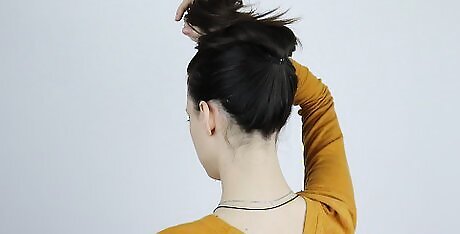
Lift your ponytail up so that you can reach the underside of it. You can flip it over the top of your head, if your hair is long enough, or you can hold it up with one hand. Hold the ponytail upward against the back of your head so that you can reach its underside.
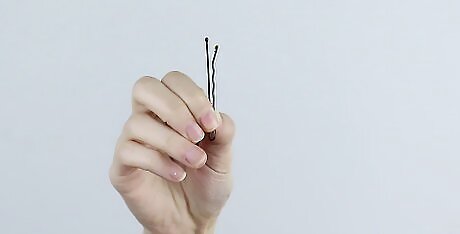
Open 1 bobby pin and aim it at your ponytail, toward your head. You are preparing to insert the bobby pin into the ponytail to perk it up.
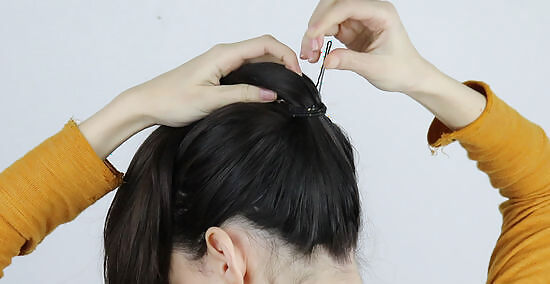
Slide the bobby pin into the ponytail, right at its center. Insert it at a slight downward angle, and push the bobby pin down until it touches your scalp. Do this gently so that you do not scratch yourself. Be careful when pushing the bobby pin in since it could be painful and cause scabs on your scalp if done incorrectly.
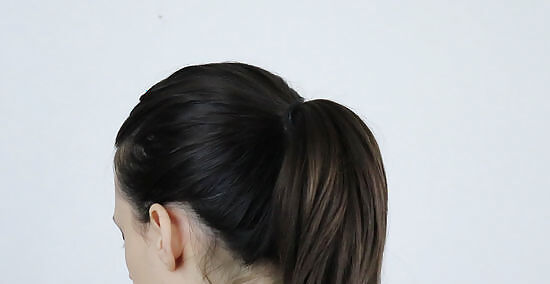
Flip your ponytail back to normal and tighten it. Grab the ponytail and squeeze it tighter, like you would when you are securing the ponytail on your head. Grab the hair on the sides of the ponytail and pull out to the sides. This pushes the elastic hair tie closer to your scalp, tightening the ponytail. You can also grab the top and bottom of the ponytail and pull them gently up and down, respectively, to give your ponytail more volume.
How to Lock a Bobby Pin in Hair
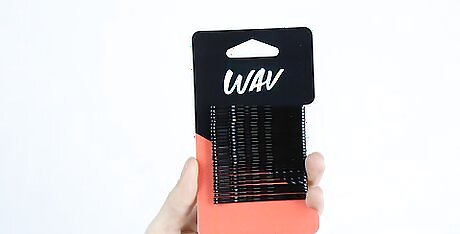
Purchase a pack of bobby pins from a local store. You can find them in the aisle dedicated to hair accessories, brushes, and combs. Usually, bobby pins are quite inexpensive. Some women recommend buying higher quality bobby pins, claiming that they do a better job of holding your hair in place. If you cannot afford professional pins, try spraying your bobby pin with hairspray or texturizing your hair before using cheaper bobby pins. This gives them more ability to grip your hair.
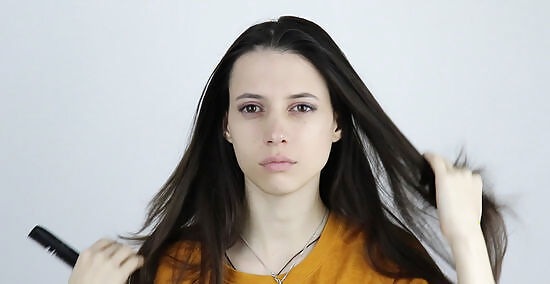
Use a comb to part a section of your hair. Start at your temple and slide the comb straight back along your scalp, toward the crown of your head. A rattail comb works well for this because of its pointed tip. You can use your index finger if you do not have a comb; however, you run the risk of not having a straight part.
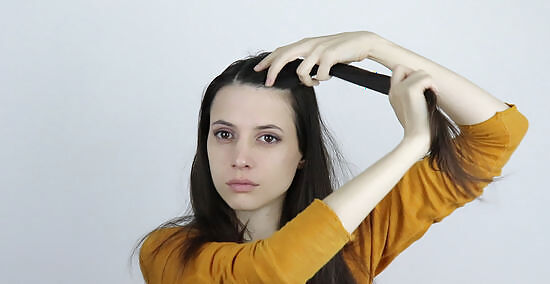
Lift the parted section of hair with your fingers. This pulls the hair up and away so that you can separate any straggling hairs from the lower area of your hair.
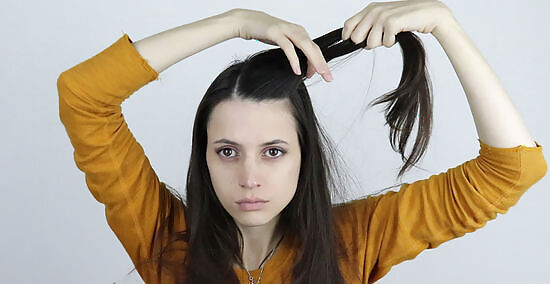
Pinch the parted section of hair where you want to slide the bobby pin. Here are a couple of tips for doing this: If you parted the section of hair on the left side of your head, pinch the hair with your left hand. This frees up your right hand to reach across to slide in the bobby pin. Likewise, if you parted the section of hair on the right side of your head, pinch the hair with your right hand. This way, your arms are not getting crossed and tangled in front of your head.
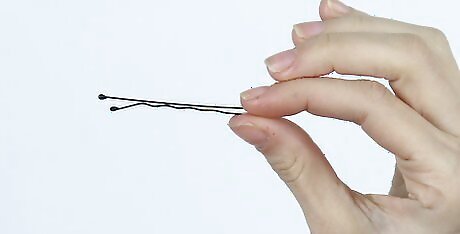
Turn the bobby pin so that the wavy side is down. When you slide the bobby pin into your hair, the wavy side should be against your scalp. Inserting the bobby pin in this way provides a better grip on your hair so that it stays in place.
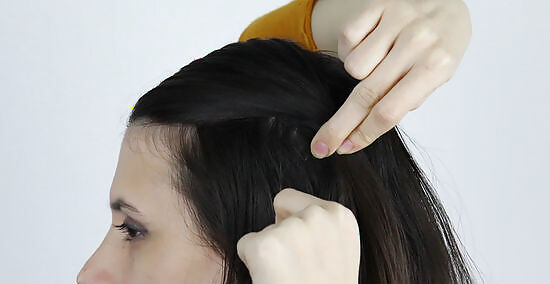
Place the tip of the bobby pin just below where you’re pinching your hair.. Gently wiggle the tip of the pin so that the arm of it grabs a few strands of hair.
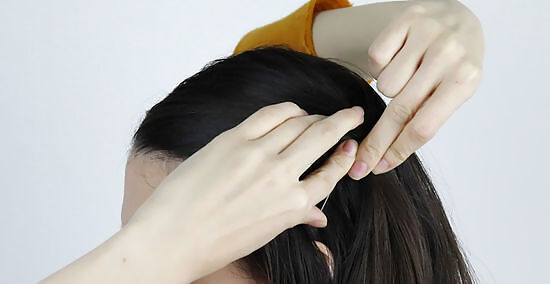
Slide the bobby pin over a very small part of the hair you want to pin. Then, lift the bobby pin and carry it over the whole section of parted hair.
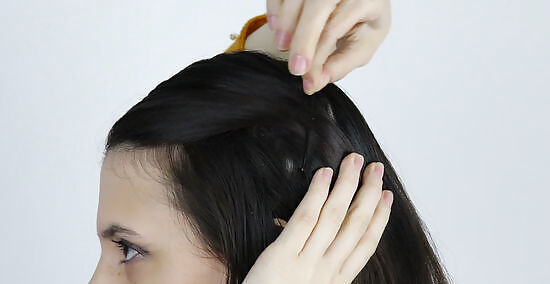
Place the tip so that the bobby pin stands vertically. Put your finger on the rounded end of the bobby pin and wiggle it from side-to-side to help it grab your hair.
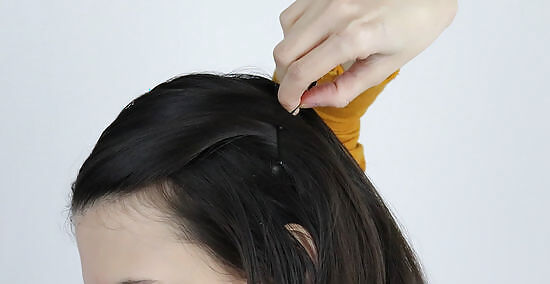
Push the rounded end of the bobby pin the opposite direction. The split tip should now face down in the direction you need to pin. The rounded tip should now point over your head to the opposite side, and the split tip should point down toward your ear and shoulder.
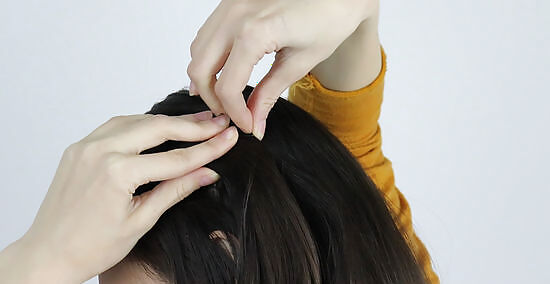
Slide the bobby pin down through the section of hair you want to pin. This locks the bobby pin in place so that it will not become loose and fall out. Carefully clean up any loose strands that got caught up locking the bobby pin but are not actually secured in it.




















Comments
0 comment